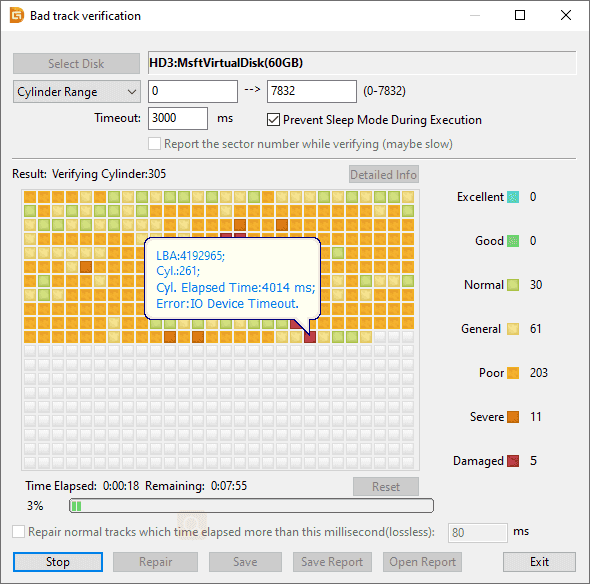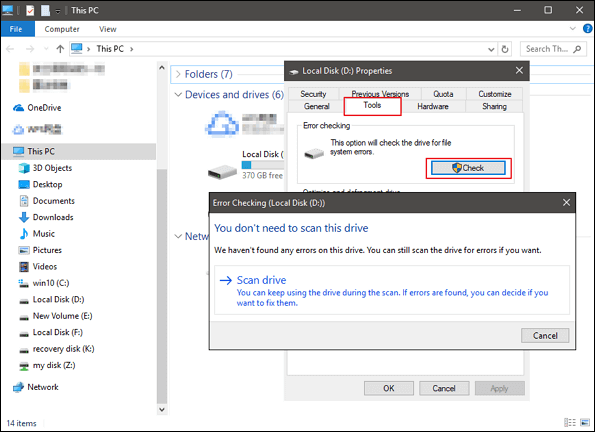Introduction
In today’s digital age, our reliance on computers and digital storage solutions has significantly increased. With the vast amount of data we store, it’s no surprise that sometimes our hard disks may encounter issues, including bad sectors.
In this in-depth guide, we will explore the process of repairing hard disk bad sectors. We will discuss various techniques, tools, and precautions you can take to effectively resolve this problem and ensure the optimal functionality of your hard disk.
Understanding Bad Sectors
Before delving into the repair process, it’s essential to understand what bad sectors are and how they can impact your computer’s performance. Bad sectors refer to areas on the hard disk that have become damaged or are no longer readable. These damaged sectors can result from various factors such as physical damage, aging, or even malware infections.
Methods to Identify Bad Sectors
To successfully repair bad sectors, you must first identify their existence on your hard disk. There are several methods you can use to detect these problematic areas:
1. Built-in Check Disk Utility
Modern operating systems, including Windows, provide a built-in utility known as "Check Disk" or "Chkdsk." This tool allows you to analyze and repair disk errors, including bad sectors. To run the Check Disk utility, follow these steps:
- Open the Command Prompt as an administrator.
- Type "chkdsk C: /f" (replace "C" with the drive letter of the affected hard disk) and press Enter.
- The utility will scan the disk for errors, including bad sectors, and attempt to repair them automatically.
2. Third-Party Disk Diagnostic Tools
Aside from the built-in utilities, there are several reliable third-party disk diagnostic tools available online. These tools often provide more advanced features and in-depth analysis of your hard disk’s health. Some popular choices include CrystalDiskInfo, HD Tune, and Western Digital Data Lifeguard Diagnostic.
Repairing Bad Sectors
Once you have identified the presence of bad sectors on your hard disk, the next step is repairing them. Remember to backup any crucial data before proceeding with the repair methods to avoid potential data loss. Here are some effective techniques to repair bad sectors:
1. Using Built-in Repair Tools
In addition to the Check Disk utility mentioned earlier, some operating systems offer additional built-in tools to repair bad sectors. For instance, Windows provides the "Diskpart" command-line tool, which allows you to perform low-level formatting, often resolving bad sector issues.
To use Diskpart, follow these steps:
- Open the Command Prompt as an administrator.
- Type "diskpart" and press Enter to open the Diskpart utility.
- Type "list disk" and press Enter to display a list of available disks.
- Type "select disk [disk number]" (replace "[disk number]" with the number associated with your hard disk) and press Enter.
- Type "clean" and press Enter to perform a low-level format, which can repair bad sectors.
2. Repairing Bad Sectors with Software
Aside from the built-in tools, there are various third-party software solutions specifically designed to repair bad sectors. These programs often provide a more user-friendly interface and offer advanced functionalities. Some reputable software options include HDD Regenerator, Victoria HDD, and SpinRite.
When using these software tools, ensure you carefully follow the instructions provided by the developers to achieve optimal results.
Precautions and Future Steps
While repairing bad sectors can help restore the functionality of your hard disk, it’s crucial to take precautions to prevent future occurrences. Consider implementing the following steps to maintain a healthy hard disk:
- Regular backups: Backup your important files regularly to an external storage device or cloud storage to minimize data loss in the event of disk failure.
- Avoid physical damage: Handle your hard disk with care, avoiding unnecessary impact or exposure to extreme temperatures.
- Update drivers and firmware: Keep your system and hard disk drivers up to date to ensure optimal performance and compatibility.
- Install reliable antivirus software: Protect your computer from malware infections that can potentially lead to bad sectors.
- Monitor disk health: Utilize disk diagnostic tools regularly to monitor the health of your hard disk and detect any potential issues before they escalate.
Conclusion
Repairing hard disk bad sectors is essential to maintain the performance and reliability of your computer’s storage system. By utilizing the methods and techniques discussed in this comprehensive guide, you can effectively identify and repair bad sectors, minimizing the risk of data loss and ensuring the longevity of your hard disk.
Remember, swift detection, timely intervention, and proactive maintenance are key to preventing future bad sector issues. Implement the precautionary measures outlined in this guide, and you’ll be well-equipped to handle any hard disk concerns that may arise.




